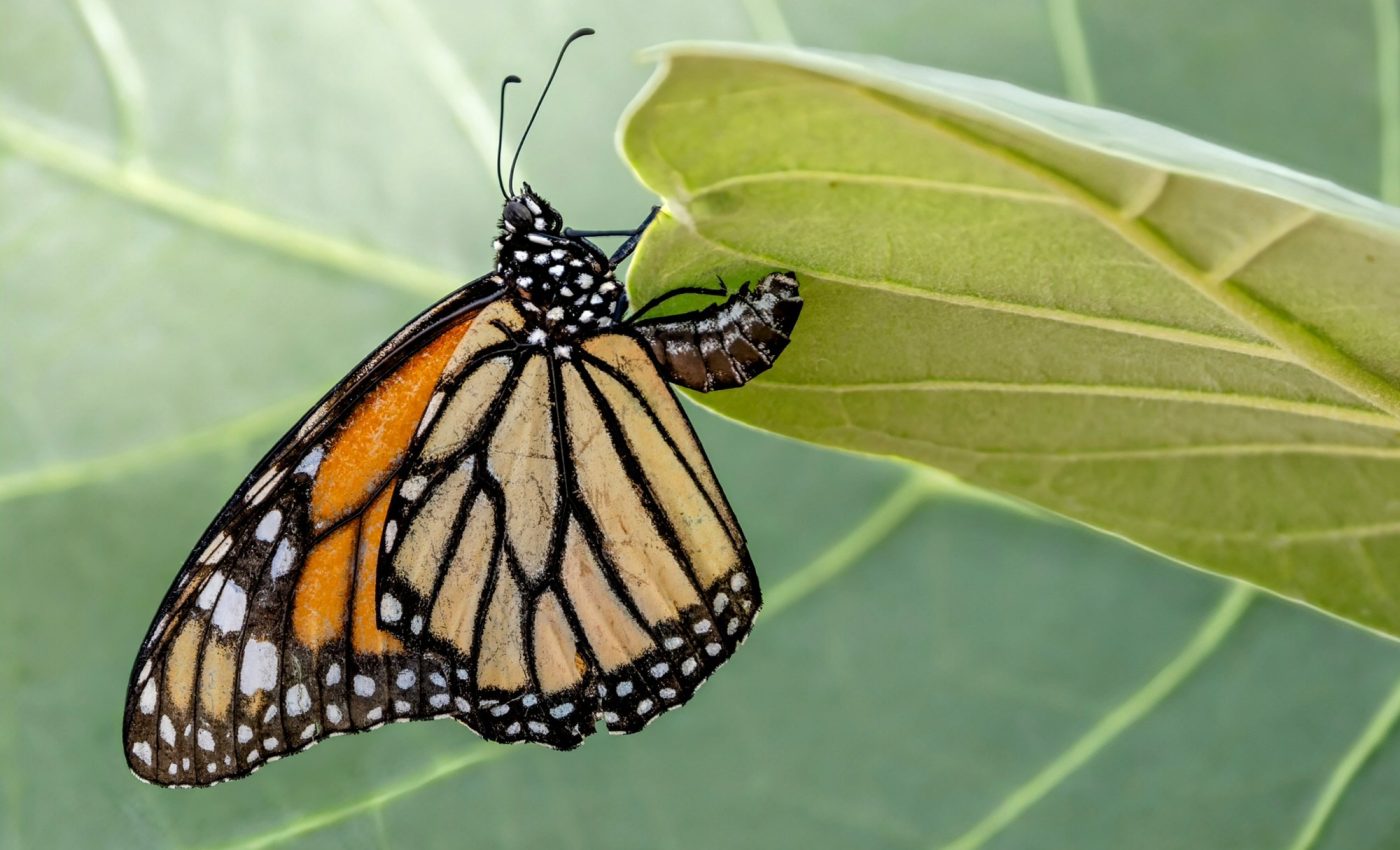
Milkweed gardens are needed to save monarch butterflies
Monarch butterflies, easily identifiable by their vivid orange and black wings, are facing a serious threat due to the disappearance of milkweed, their sole food source as caterpillars.
The reduction of milkweed has put monarch populations at risk of extinction.
Urban milkweed gardens for monarchs
Recent research published in the journal Frontiers in Ecology and Evolution indicates that urban milkweed gardens can play a crucial role in providing habitat for monarchs.
Study lead author Karen Klinger is a geographic information systems analyst in the Keller Science Action Center at the Field Museum.
“In this study, we found that monarchs can find the milkweed, wherever the milkweed is, even if it’s in planters on balconies and rooftops,” said Klinger.
“Milkweed gardens can be in all shapes and sizes, and any milkweed garden can contribute habitat for monarchs.”
Monarch migration relies on milkweed
The migration of monarchs is one of the most extraordinary among insects, involving a multi-generational journey from Mexico to Canada and back.
The eastern monarch population starts in Mexico and travels northward, laying eggs on milkweed plants along the way. Each generation moves further north until they reach southern Canada.
At the end of summer, a special “super generation” of butterflies makes the long trip back to Mexico to overwinter.
This migration pattern heavily relies on the availability of milkweed, which has drastically decreased due to the use of pesticides in agriculture, particularly in the Midwest.
As a result, monarch populations have plummeted, leading to their consideration for endangered species status by the International Union for Conservation of Nature and the US Fish and Wildlife Service.
Decline in urban milkweed
“If we don’t do anything soon, monarchs are going to be in serious trouble,” warned Aster Hasle, a lead conservation ecologist at the Field Museum’s Keller Science Action Center and co-author of the paper.
Given the decline in rural milkweed, scientists have explored the potential of urban milkweed gardens to fill the gap.
“There was a call for all hands on deck, to plant milkweed across all sectors of the landscape, but people discounted urban areas, because if you look at some mapping of urban areas, it looks like it’s completely developed, with no availability for milkweed plants,” Klinger explained.
Milkweed plants in urban settings
Klinger was involved in a 2019 study by Field Museum scientists, which demonstrated that urban areas could support milkweed in various locations, such as yards, alleyways, and rooftops.
The recent follow-up study engaged over 400 community scientists who monitored milkweed plants in their urban settings for monarch eggs and caterpillars.
The team collected extensive data over four years, totaling 5,905 observations from 810 milkweed patches.
The results showed that monarchs are attracted to gardens with common milkweed and a diversity of blooming plants, which provide necessary nectar. Moreover, mature milkweed plants were more effective in supporting monarch reproduction.
Urban gardens and monarch conservation
“We encouraged participants who had planters on balconies, who had planters on rooftop decks, and we saw some of the most amazing things,” Klinger recalls, noting one instance where a rooftop planter housed five large caterpillars.
These findings underscore the importance of urban gardens in monarch conservation. While larger gardens with a variety of plants are ideal, even small contributions can make a significant difference. “Plant the species that works the best for you and your garden,” Klinger advised.
In support of these efforts, Illinois Governor JB Pritzker signed the MONARCH Act, which restricts homeowners associations from prohibiting native plantings and provides assistance for creating native and pollinator-friendly gardens.
Broader implications of the study
Monarchs serve as indicators of broader ecological health, as their extensive migration covers a vast area.
“Monarchs need a lot of the things that other insects need, like blooming flowers, so what’s good for monarchs is good for other pollinators too. And we’re in the midst of a global insect decline, so it’s important to help,” Hasle said.
Supporting urban milkweed planting not only aids monarchs but also benefits the broader ecosystem, highlighting the critical role of these efforts in conservation.
—–
Like what you read? Subscribe to our newsletter for engaging articles, exclusive content, and the latest updates.
Check us out on EarthSnap, a free app brought to you by Eric Ralls and Earth.com.
—–













